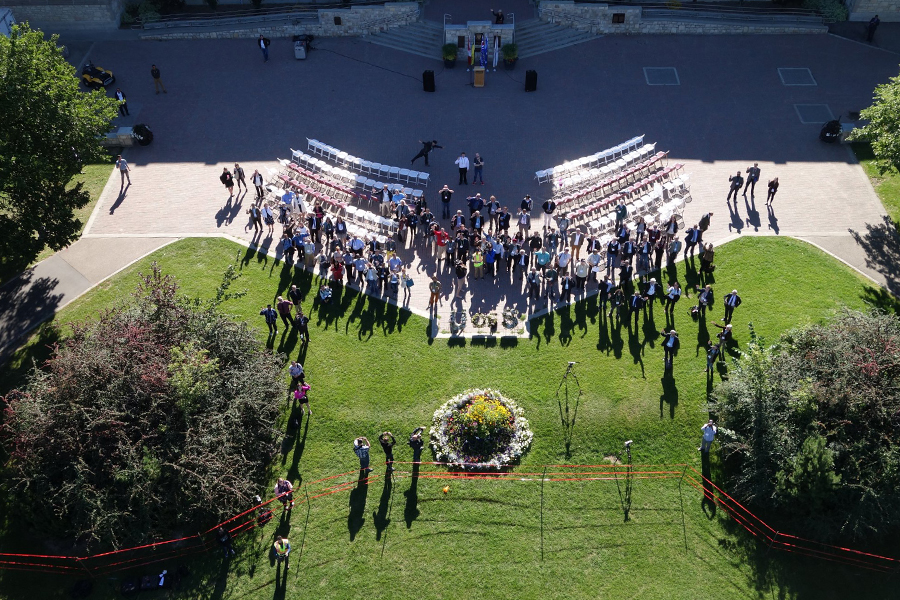
New food security research and technologies launched at the U of S
The University of Saskatchewan marked the official launch of its unique Plant Phenotyping and Imaging Research Centre (P2IRC) today with an international symposium and demonstration of new drone technology to be used in novel crop development approaches.
By University CommunicationsThe creation of the P2IRC stems from a $37.2-million award over seven years from the Canada First Research Excellence Fund (CFREF) for the innovative research program “Designing Crops for Global Food Security”—one of only five CFREF grants awarded across Canada last year in the inaugural competition.
“Thanks to this major federal investment, we can undertake leading-edge research and technology development that will transform crop breeding and provide innovative solutions to national and global food security,” said Karen Chad, U of S vice-president of research.
“This new centre will offer unprecedented research opportunities for our students and faculty, and will enhance the U of S biosciences cluster—one of the largest clusters of food-related researchers in the world.”
The P2IRC is led by Maurice Moloney, executive-director of the university’s Global Institute for Food Security (GIFS), who has been building a multi-disciplinary team of researchers from across the U of S campus and from other Canadian universities and centres.
“By 2022, we hope to create a unique global resource for plant breeders seeking to develop new crop varieties at unprecedented speed and scale,” Moloney said.
“The new science we are developing at the P2IRC will elevate Canada’s position as a global powerhouse in agricultural research and lead to commercial spin-offs involving field and aerial sensors, satellite imaging, robotics, and big data analytics.”
He noted the P2IRC is unique in that it combines plant genomics with crop phenotyping (the identification of useful traits), high-performance computing, and digital imaging technology, as well as undertakes research to address societal and developing world impacts.
Research projects in four theme areas have undergone rigorous international peer review involving an eight-member International Scientific Advisory Committee that includes experts from Australia, Germany, France, and the U.K., several of whom are participating in the symposium.
The research involves scientists from GIFS, a wide range of U of S colleges, the U of S Crop Development Centre in the College of Agriculture and Bioresources, the Canadian Light Source, and the Sylvia Fedoruk Canadian Centre for Nuclear Innovation which operates a cyclotron on campus capable of creating radioisotopes for all forms of biological imaging. The Johnson-Shoyama Graduate School of Public Policy is the lead partner on policy research.
The new centre also involves partnerships with four Canadian universities, three international institutes, and more than 15 private and public organizations, including the National Research Council and Agriculture and Agri-Food Canada.
The P2IRC is currently recruiting graduate students, technicians, software developers, and researchers. Over the seven years, 60 graduate students and 35 post-doctoral fellows will be trained at P2IRC, and four or five new faculty positions will be created.
“This new facility exemplifies the forward thinking, highly convergent view of science that Canada needs to succeed in the current fourth industrial revolution,” said B. Mario Pinto, president of the Natural Sciences and Engineering Research Council of Canada, speaking on behalf of Canada’s research granting councils.
“By bringing together diverse partnerships and diverse lines of investigation such as imaging, genomics, robotics and policy research, P2IRC will help establish Canada as a major player in the growing field of precision agriculture.”
For more information, visit http://P2IRC.usask.ca

